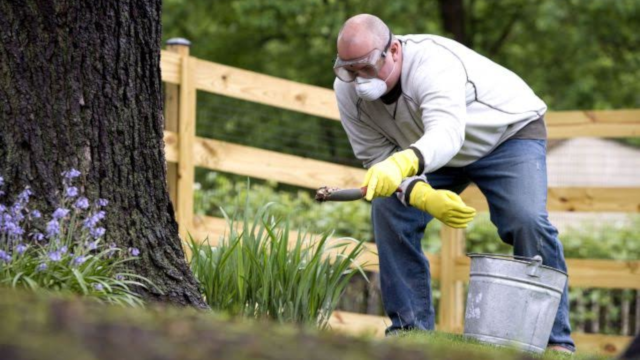The ABCs of Fertilizing
Sat Mar 11 2017 | maintenance | sod
Thick, vibrant grass requires iron, phosphorous and nitrogen. Of the three, nitrogen is the only nutrient you need to apply regularly. Here’s how to avoid, recognize and treat nutrient deficiency in your California lawn.

Avoiding Nutrient Deficiencies
To avoid nutrient deficiencies in the first place, you’ll need to fertilize your lawn regularly. Grass should receive roughly 4 lbs of nitrogen per 1,000 sq feet over the course of a year. For cold activated grasses, such as Superior Fescue sod, you should supply most of the required nitrogen during the fall when grass grows fastest.
You can supply all three nutrients using commercial fertilizers or organic composts and manures. You can also purchase fast-release nitrogen, but a thick deposit can burn grass -- a mechanical spreader is your best bet. Over-applying nitrogen, especially during hot summer months when roots are growing more slowly, encourages the shoots to outgrow their roots and can cause grass to shrivel. Organic compost, which releases nitrogen gradually, is a good choice for the warm season.
Recognizing Nutrient Deficiencies
The turf will tell you if it’s not getting what it needs. Nutrient deficiencies usually result in uniform discoloration: Yellowing of young blades indicates iron deficiency, while low phosphorous causes vibrant grass to fade into a dull bluish-green, leaving edges purple or reddish. Most commonly, you’ll see nitrogen deficiency, which causes grass to yellow, grow slowly and thin out, giving more room for weeds to grow. You can often diagnose nutrient problems just by looking, but if you’re not sure, send a soil sample to a commercial lab and have them check the nutrient content.
Consider Grass-cycling
Grass-cycling utilizes grass clippings as fertilizer. When done properly, it returns valuable nutrients to the soil, reducing your need for fertilizer by 20% and cutting down waste at the same time. But don’t take it too far. Different grasses produces different amounts of thatch on their own. Regular grass-cycling can easily add too much to this layer -- a half inch of thatch can suffocate your grass, and wet clippings encourage mushroom growth.
Luckily, Superior Fescue sod produces less thatch than species such as Bermuda, Bent, and Kentucky Bluegrass, so there’s less risk. If you choose to include grass-cycling in your fertilizing routine, use a mulching mower to cut grass clippings into fine pieces before returning them to the soil. This will help them decompose quickly and allow the soil to breathe.
For more information on your specific lawn needs, contact us with questions.